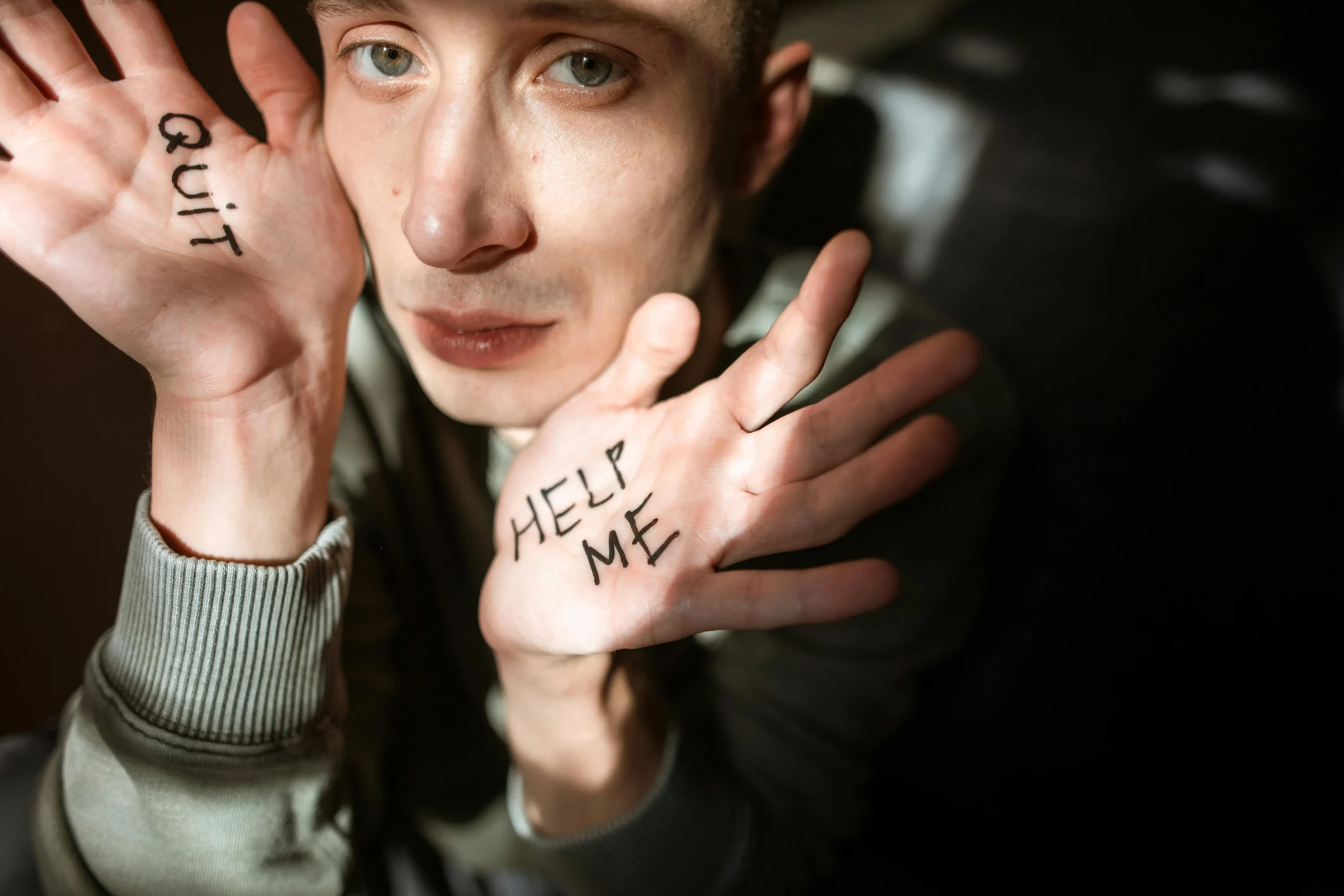Trauma is an invisible wound that can leave lasting emotional, mental, and even physical scars. For many, trauma doesn’t fade with time—it lingers, disrupts daily life, and haunts the mind long after the event has passed. When these reactions become chronic and disruptive, it may be a sign of Post-Traumatic Stress Disorder (PTSD).
PTSD is more than just a response to a disturbing experience. It is a serious mental health condition that can affect anyone, regardless of age, gender, or background. Whether it stems from childhood abuse, sexual assault, war, natural disasters, or even medical emergencies, PTSD has a unique and painful impact.
In this blog, we’ll explore what PTSD really is, its symptoms, causes, and most importantly—how to cope and find healing. We’ll also highlight the role therapy plays in recovery and how professionals like Arpan Sarma, a trained psychologist, help individuals rebuild their lives after trauma.
Table of Contents
ToggleWhat Is PTSD?
Post-Traumatic Stress Disorder (PTSD) is a mental health condition that can develop after experiencing or witnessing a life-threatening or highly traumatic event. It affects the brain’s stress response system, making it hard to distinguish between safety and danger—even long after the trauma has passed.
PTSD was first officially recognized in soldiers returning from war, but now we know it affects people from all walks of life. It’s estimated that 1 in 11 people will be diagnosed with PTSD in their lifetime.
Common Causes of PTSD
PTSD can result from a wide range of traumatic events, including:
- Physical or sexual assault
- Childhood abuse or neglect
- Military combat
- Car accidents or serious injuries
- Natural disasters (earthquakes, floods, fires)
- Medical emergencies (heart attack, cancer diagnosis)
- Loss of a loved one
- Witnessing violence or death
- Domestic violence
It’s important to remember: trauma is subjective. What may seem minor to one person could be deeply scarring to another.
Symptoms of PTSD
PTSD symptoms typically appear within three months of the trauma, but they can also surface years later. These symptoms are usually grouped into four categories:
1. Intrusive Memories
- Recurrent, unwanted memories of the traumatic event
- Flashbacks (reliving the trauma as if it’s happening again)
- Nightmares or disturbing dreams
- Emotional distress when reminded of the trauma
2. Avoidance
- Avoiding people, places, or activities that trigger memories of the trauma
- Refusing to talk about the event or avoiding thoughts and feelings related to it
3. Negative Changes in Thinking and Mood
- Feelings of hopelessness or numbness
- Memory problems, especially about the trauma
- Difficulty experiencing positive emotions
- Distorted beliefs about oneself (“I am worthless”) or the world (“The world is completely unsafe”)
4. Changes in Physical and Emotional Reactions
- Being easily startled or frightened
- Trouble sleeping or concentrating
- Irritability or aggressive behavior
- Guilt, shame, or self-blame
- Hypervigilance (always feeling “on edge”)
These symptoms can interfere with work, relationships, social interactions, and overall quality of life.
How Trauma Affects the Brain
PTSD changes the way the brain responds to stress:
- The amygdala, which processes fear, becomes overactive.
- The hippocampus, which stores memories, may shrink in volume, leading to memory issues.
- The prefrontal cortex, responsible for rational thinking, may become less active, affecting emotional regulation.
These changes are why people with PTSD may feel like they’re reliving trauma, even when they’re safe.
Coping with PTSD: First Steps Toward Healing
Healing from PTSD doesn’t mean forgetting what happened—it means learning how to live with the memory without being controlled by it. While everyone’s healing journey is different, here are some foundational steps that can help:
1. Acknowledge the Trauma
Accepting that the trauma occurred and that it had an impact is the first step. Denial can delay healing and intensify symptoms.
2. Seek Professional Help
PTSD is a medical condition, not a personal weakness. Psychologists like Arpan Sarma are trained to help individuals process trauma, develop coping skills, and reduce symptoms.
3. Build a Support System
Having someone who listens without judgment—whether it’s a friend, family member, or support group—can provide emotional relief.
4. Create a Safe Environment
Minimize exposure to triggers and stressors. Create calming routines, use grounding techniques, and keep your environment predictable and soothing.
How Therapy Helps PTSD
Therapy is a cornerstone of PTSD treatment. Different therapeutic modalities are designed to target specific aspects of trauma and recovery:
1. Cognitive Behavioral Therapy (CBT)
CBT helps patients challenge and reframe negative thought patterns related to the trauma. It teaches healthier thinking and behavioral responses.
2. Prolonged Exposure Therapy
This involves gradually and safely exposing a person to trauma-related memories, feelings, or situations, allowing the brain to reprocess and reduce fear.
3. Eye Movement Desensitization and Reprocessing (EMDR)
EMDR uses guided eye movements while recalling traumatic events to help the brain reprocess memories and reduce emotional intensity.
4. Trauma-Focused Cognitive Therapy (TF-CBT)
Especially helpful for children and adolescents, TF-CBT combines cognitive therapy with trauma-sensitive interventions.
5. Mindfulness-Based Therapies
These include meditation, breathing techniques, and yoga, helping individuals stay grounded and present during episodes of anxiety or flashbacks.
Professionals like Arpan Sarma tailor therapy to each individual’s unique experience and pace, ensuring a compassionate and structured approach to healing.
Medication for PTSD
While therapy is often the first line of treatment, some individuals benefit from medication to manage symptoms like anxiety, depression, or sleep disturbances. Common medications include:
- SSRIs (e.g., Sertraline, Paroxetine)
- SNRIs (e.g., Venlafaxine)
- Prazosin (for nightmares)
Medication should always be prescribed and monitored by a psychiatrist or primary care provider.
Self-Care Strategies for Managing PTSD
While therapy is crucial, daily self-care plays a vital role in managing symptoms. Here are some strategies:
Grounding Techniques
Use your senses to bring your attention to the present moment:
- Hold an ice cube
- Describe your surroundings out loud
- Take slow, deep breaths
Mindfulness & Meditation
Apps like Headspace or Calm offer guided meditations that help reduce stress and enhance emotional regulation.
Physical Activity
Regular exercise, even a daily walk, helps release endorphins and reduce anxiety.
Healthy Lifestyle
Eat well, sleep consistently, and reduce alcohol or caffeine intake. Poor health can exacerbate PTSD symptoms.
Expressive Outlets
Journaling, art, or music can help process emotions that are difficult to verbalize.
Supporting Someone with PTSD
If someone you love has PTSD, your support can make a significant difference. Here’s how you can help:
- Listen without judgment
- Avoid giving unsolicited advice
- Be patient with their healing process
- Encourage professional treatment
- Avoid pressuring them to “move on”
- Educate yourself about PTSD to reduce misunderstandings
Just being present and emotionally available can offer a sense of safety and validation.
A Real-Life Recovery Story
Rahul, a 30-year-old engineer, developed PTSD after surviving a violent robbery. He couldn’t sleep, avoided public spaces, and suffered from panic attacks. With the help of Arpan Sarma, he began Exposure Therapy combined with CBT. Through regular sessions, grounding exercises, and strong family support, Rahul slowly reclaimed his confidence and sense of safety. Today, he mentors others dealing with trauma and reminds them: “You don’t have to go through this alone.”
Recovery is a Journey, Not a Destination
Healing from PTSD is rarely linear. There may be setbacks, but progress is always possible. With time, therapy, and support, people can:
- Regain control over their emotions
- Develop resilience
- Rebuild relationships
- Rediscover joy
There is no shame in asking for help. PTSD is not a sign of weakness—it is the mind’s way of trying to survive.
When to See a Psychologist
If you or someone you know is experiencing:
- Flashbacks or nightmares
- Severe avoidance or social isolation
- Intense anxiety or panic attacks
- Self-harm or suicidal thoughts
… it is time to seek professional help.
Mental health experts like Arpan Sarma are trained to provide the guidance, safety, and evidence-based treatment necessary for healing.
Final Thoughts: You Can Heal
PTSD can feel like an uninvited shadow that never leaves, but there is light on the other side of trauma. With proper therapy, self-care, and compassionate support, recovery is not just possible—it’s probable.
You are not broken. You are wounded. And wounds can heal.
If you’re struggling with trauma, don’t suffer in silence. Reaching out to a therapist is the first—and often most courageous—step on the path to healing.







